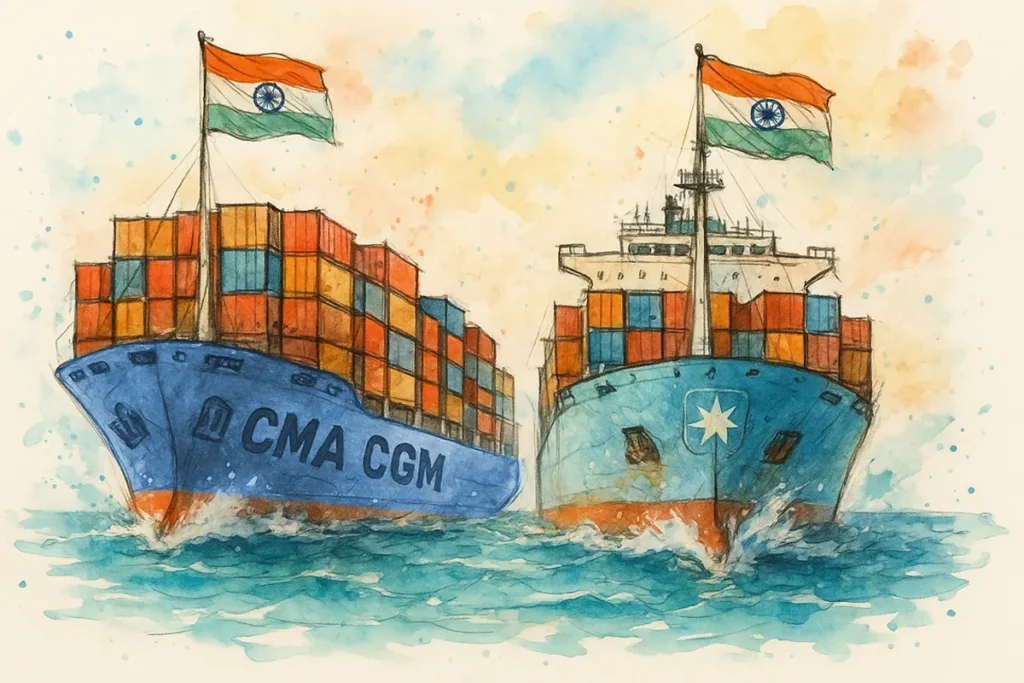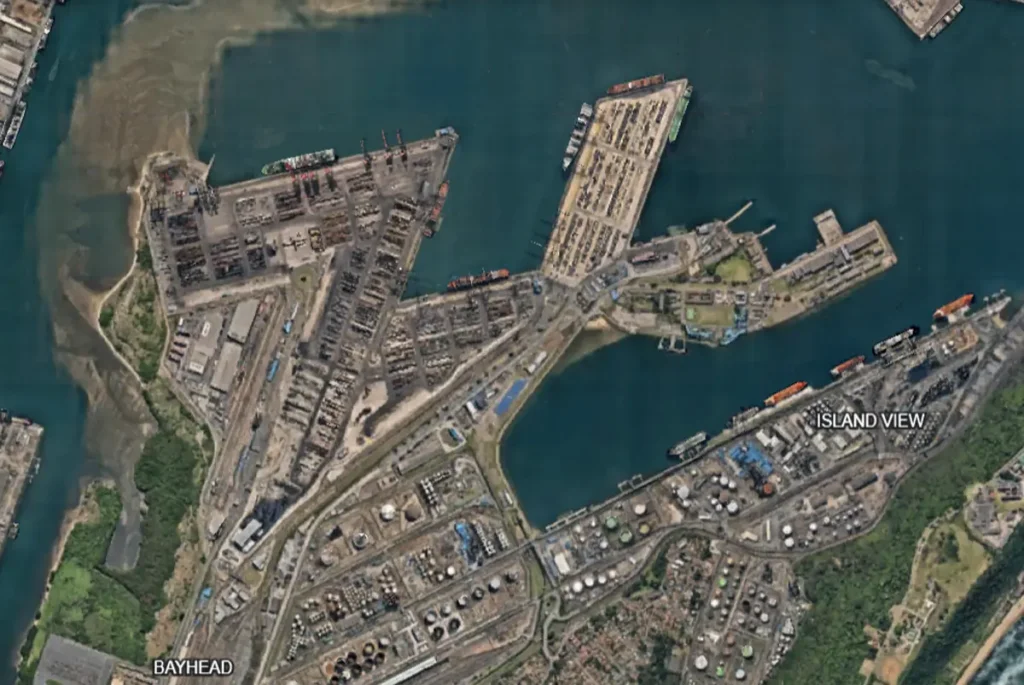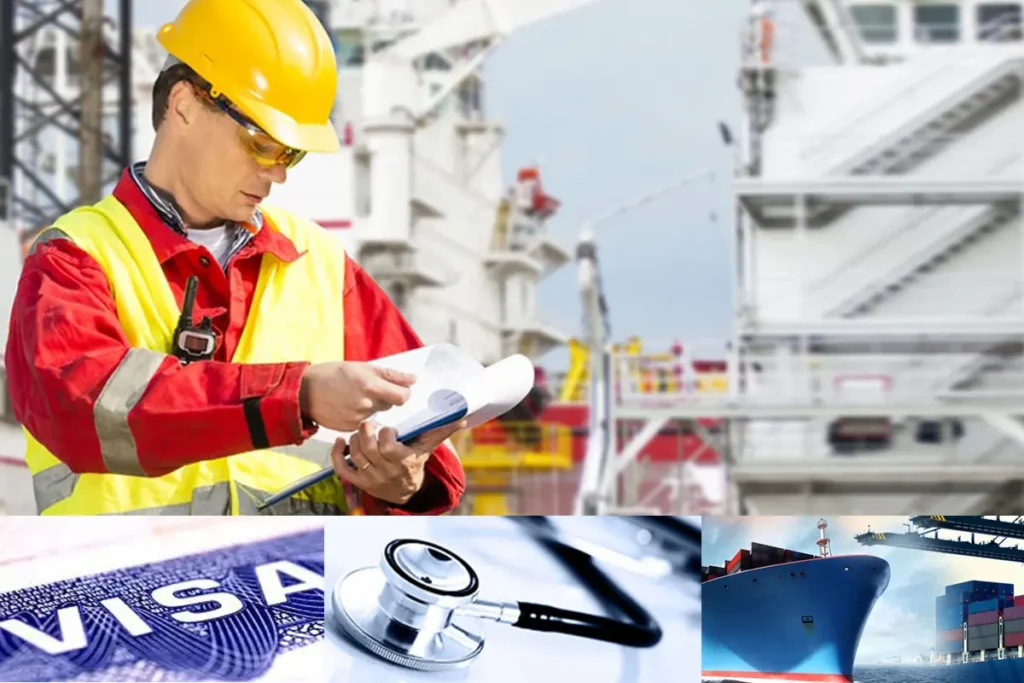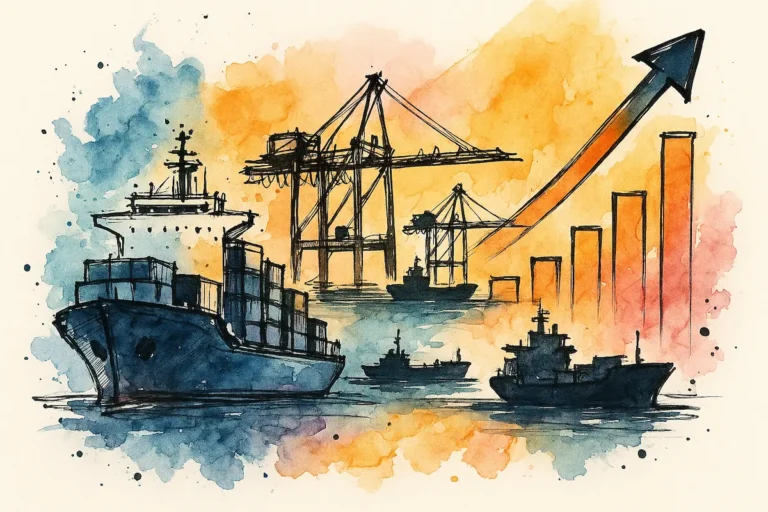The traditional handshake that once symbolised trust between trading partners is rapidly being replaced by something even more robust and scalable—the digital handshake..
This transformation isn’t just about eliminating paper; it’s about embedding trust, transparency, and efficiency into the very infrastructure of global commerce..
At the heart of this shift lies interoperability—the ability of different digital systems and platforms across the trade ecosystem to communicate, share, and validate data seamlessly..
Interoperability ensures that shipping lines, freight forwarders, customs authorities, importers, exporters, banks, and insurers can operate from a common set of standards, protocols, and expectations..
This shared digital language forms the basis of more resilient, secure, and transparent global supply chains..
Why interoperability..??
The push for interoperability accelerated after the COVID-19 pandemic, which exposed the vulnerabilities of fragmented, paper-heavy processes..
Delays in document exchanges, disrupted courier services, and misaligned data between platforms underscored how inefficiencies in trade documentation can trigger broader supply chain breakdowns..
Since then, industry alliances, regulatory bodies, and private-sector innovators have collectively prioritised the development and adoption of interoperable systems, particularly in the area of electronic bills of lading (eBLs)..
When ratified, eBLs are the legal digital equivalent of the traditional paper bill of lading, a core document in international shipping that serves as a receipt of goods, a document of title to the goods, and as evidence of contract of carriage..
Making this and other trade documents digital and interoperable across platforms and jurisdictions is a foundational step in digitising global trade..
Recent successes in interoperability
In recent years, multiple real-world trade transactions have been completed entirely through interoperable digital systems..
In a first-of-its-kind transaction in container shipping, OOCL, as a carrier, used IQAX and the DCSA standards as a base to issue an eBL governed by English Law to a major oil and gas company..
This eBL was transferred to the shipper on ICE CargoDocs, which was then subsequently transferred to its customer for surrendering back to OOCL with the transfer secured by GSBN..
As per ICE Digital Trade, this transaction delivered on all 4 of the key components of eBL interoperability – Technical, Legal, Liability and P&I club approval..
In the second case, an original negotiable eBL governed by Singapore Law, was issued by PIL on ICE CargoDocs.. This eBL remained on ICE CargoDocs and the customer, Mitsui, accessed the eBL via CrimsonLogic’s platform, utilising ICE’s partner APIs.. This approach ensured seamless integration and access across different systems..
The entire process was compliant with digital trade legislation like the UNCITRAL Model Law on Electronic Transferable Records (MLETR) and industry rules such as the ICC eUCP..
Such examples illustrate a critical achievement: interoperability across legal frameworks, technical platforms, and supply chain participants..
System-to-system connectivity
These successes did not happen in silos.. The parties involved utilised different digital platforms based in different parts of the world with underlying support for recognised data standards..
The ability of these systems to communicate with each other was made possible through adherence to industry-wide frameworks governing:
- Document structure and metadata
- Verification protocols (such as hash-based authentication)
- User identity and authorisation standards
- Legal recognisability in multiple jurisdictions
Interoperability allowed systems on both ends to read, validate, and transmit the eBL and supporting documents without requiring the user to duplicate efforts or rely on email or paper copies..
This level of digital collaboration also enabled auditability—every document change, transfer, or endorsement was logged with a timestamp and identity trail, reinforcing traceability and legal confidence..
Financial and operational impact
The practical benefits of these interoperable systems are measurable and significant..
- Faster release of cargo: With digital documents already available at the destination port, delays in customs clearance and cargo pickup were minimised..
- Reduced document fraud: The cryptographic integrity of digital documents makes them nearly impossible to alter or forge without detection..
- Improved working capital: Buyers and sellers benefited from faster document exchanges and smoother bank processes, speeding up payment cycles..
- Lower admin costs: By removing courier fees, manual data entry, and physical archiving, stakeholders realised substantial savings per shipment..
Trust through transparency
Perhaps the most important benefit is the rebuilding of trust in global trade..
When a shipper knows that their documents can be securely shared and instantly verified by the bank, the customs authority, and the consignee, they no longer need to rely on follow-up emails, manual cross-checks, or courier tracking numbers..
This digital handshake creates a shared truth—a single source of verified documentation that everyone in the chain can trust, without needing to be on the same platform..
This is especially beneficial for small and medium enterprises (SMEs) that often face delays or exclusion due to a lack of digital maturity.. With interoperable systems becoming the norm, even smaller players can plug into the digital trade ecosystem without needing proprietary infrastructure..
Remaining challenges
Despite the clear progress, challenges to widespread adoption remain:
- Legal recognition: Not all jurisdictions have adopted or are compliant with laws that give electronic transferable records the same standing as paper documents.. Without this, eBLs may be refused at certain ports or by certain banks..
- Awareness and training: Many smaller companies are still unaware of how to access or use digital trade systems.. Capacity-building and education must go hand-in-hand with technical rollouts..
- Platform competition: With multiple providers in the market, some companies remain hesitant to commit due to fears of vendor lock-in.. Open standards and platform-neutral approaches will be key to building trust across ecosystems..
The road ahead for interoperability
The momentum toward interoperability in trade documentation is undeniable.. Legal reforms, industry partnerships, and successful cross-platform trials have shown that it is not only possible, but practical and profitable, to conduct global trade entirely through digital channels..
As more governments adopt electronic trade legislation and more trade stakeholders embrace data standards, the digital handshake will become more than a metaphor—it will become a baseline requirement for efficient, trustworthy trade..
Conclusion
The digital handshake represents a profound shift in how trust is built and maintained in global trade.. Through interoperability, the shipping industry is finally bridging the gap between digital innovation and real-world logistics execution..
While challenges remain, the foundation has been laid.. And with each successful interoperable eBL transaction, confidence in the system grows stronger..
The message is clear: in the future of trade, trust will not be printed—it will be digitally verified, shared, and secured across systems..













